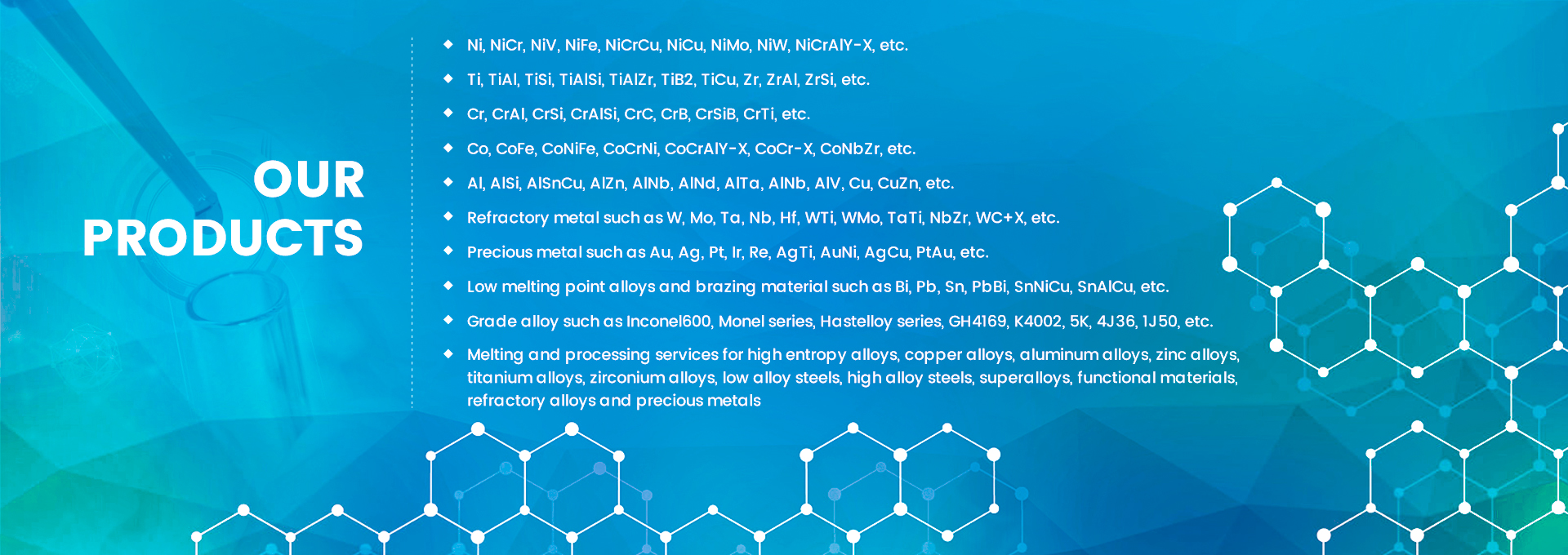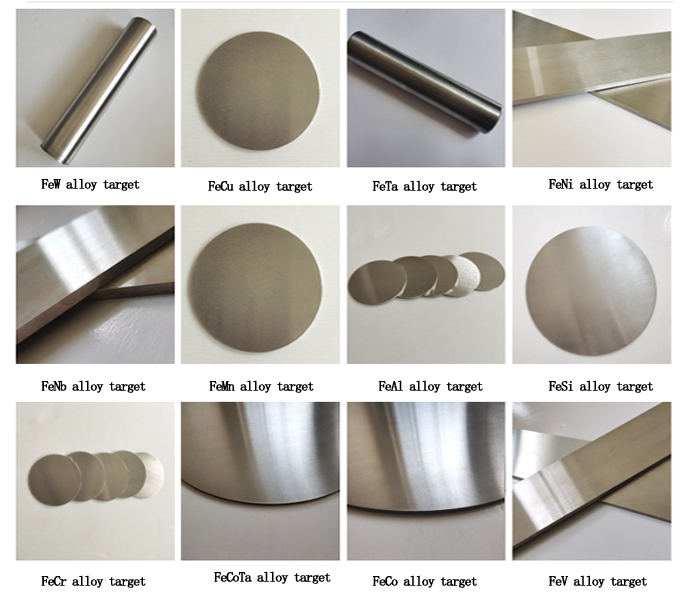1. Overview of Iron Alloy Sputtering Targets
Iron alloy sputtering targets are functional materials composed of an iron matrix blended with elements like tungsten, nickel, and tantalum. These targets are critical in industries such as semiconductors, aerospace, and renewable energy, where precise control over composition enables tailored properties like high conductivity, thermal stability, and magnetic performance.
2. Technical Characteristics and Innovations in Key Iron Alloy Targets
1. Iron-Tungsten Alloy Targets (Fe-W)
Properties: Exceptional melting point (3,422°C), superior creep resistance.
Innovations: Nano-reinforced phase design maintains >60% high-temperature strength retention. Multi-layer protective coatings (e.g., rare-earth oxide-doped layers) enhance oxidation resistance.
Applications: Protective coatings for 6th-gen aircraft engine blades, divertor modules in nuclear fusion reactors.
2. Iron-Nickel Alloy Targets (Fe-Ni)
Properties: High magnetostriction (15,000 Gauss saturation flux density), robust mechanical toughness.
Fabrication: Hot-press sintering with precision forging ensures grain size <100 μm for uniform sputtering.
Applications: Inductors in switch-mode power supplies, magnetron sputtering chamber coatings
3. Iron-Chromium-Aluminum Alloy Targets (Fe-Cr-Al)
Challenges: Oxygen content control (<100 ppm), difficult to achieve with conventional ball milling.
Breakthroughs: Gas-water atomization (using micro-etchants to disrupt oxide layers) paired with inert gas ball milling reduces oxygen to <50 ppm.
Applications: Corrosion-resistant coatings, transparent electrodes for LCDs.
4. Iron-Silicon Alloy Targets (Fe-Si)
Market Trends: Global market reached $1.8B in 2023, driven by demand for 3N/4N high-purity grades (>60% used in semiconductors).
Innovations: Grain refinement (<50 μm) and customized compositions for 2D material deposition.
5. Iron-Cobalt-Tantalum Alloy Targets (Fe-Co-Ta)
Properties: High magnetic permeability and thermal stability for high-frequency electronics.
Fabrication: Vacuum induction melting combined with CVD achieves 99.9999% purity.
3. Key Advances in Manufacturing Technologiesowder Metallurgy Innovations:
Secondary resource recycling (e.g., converting tungsten scrap into electronic-grade WF6 gas).
Plasma chemical synthesis produces ultrafine tungsten powder (<1 μm) for denser targets.
Grain Boundary Engineering:
Boron/zirconium additions purify grain boundaries, delaying high-temperature failure.
Directional solidification optimizes grain orientation for uniform sputtering.
Sustainable Production:
Closed-loop systems recycle HF electrolytes for WF6 synthesis, minimizing waste.
4. Industry Challenges and Solutions
Density-Cost Trade-off: Porous structural designs reduce weight in high-density tungsten alloys (19.25 g/cm³).
Fatigue Resistance: Bio-inspired architectures (e.g., honeycomb-like multi-scale porosity) inhibit crack propagation.
Customization: Additive manufacturing enables complex cooling structures with lower machining costs.
Post time: Apr-27-2025






